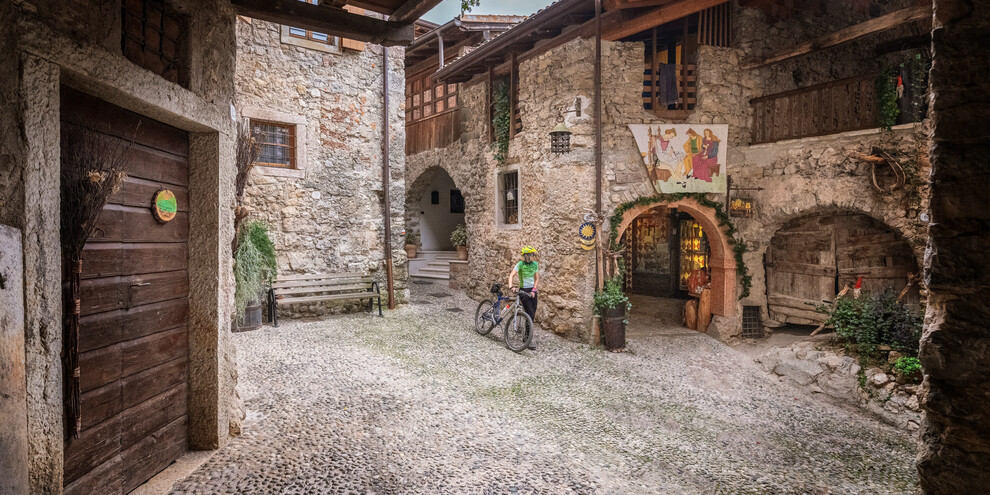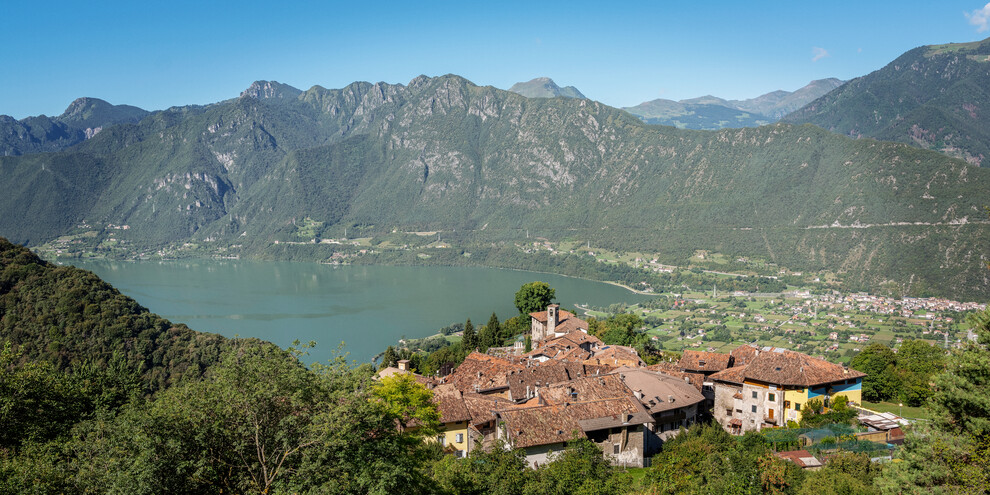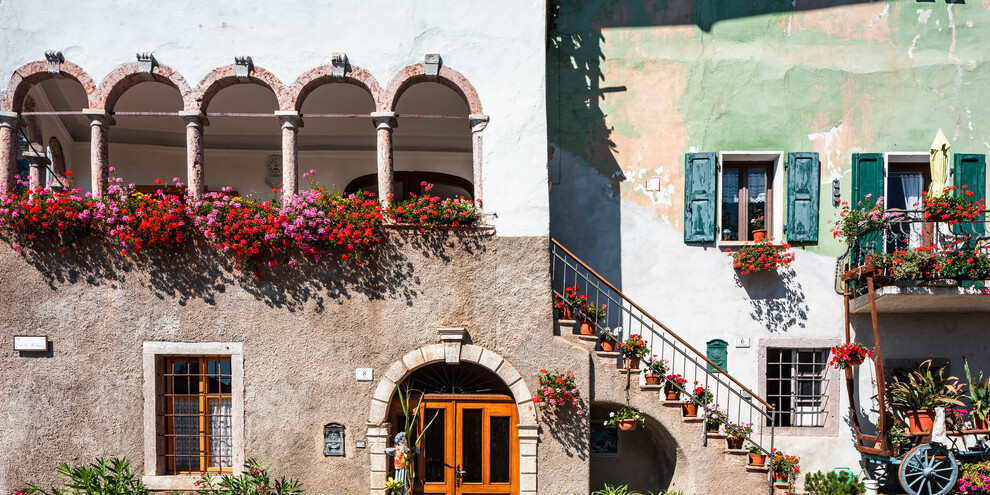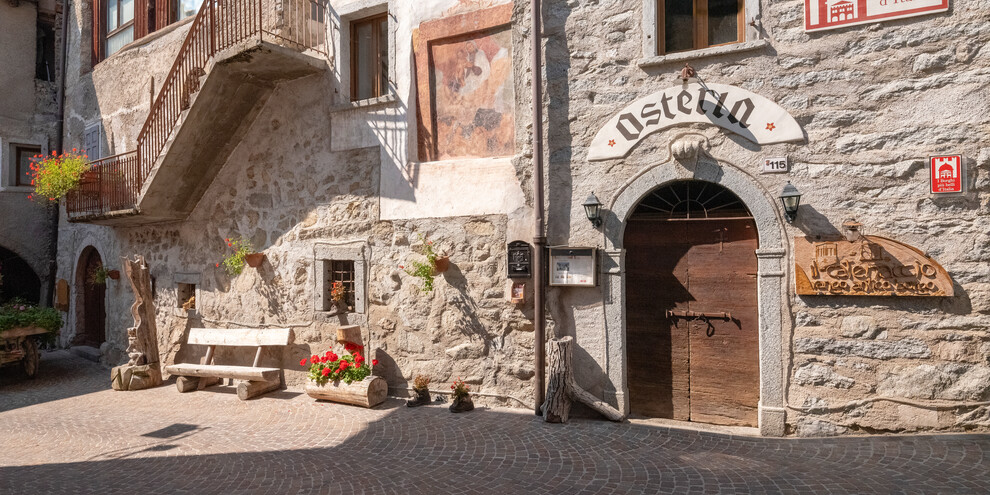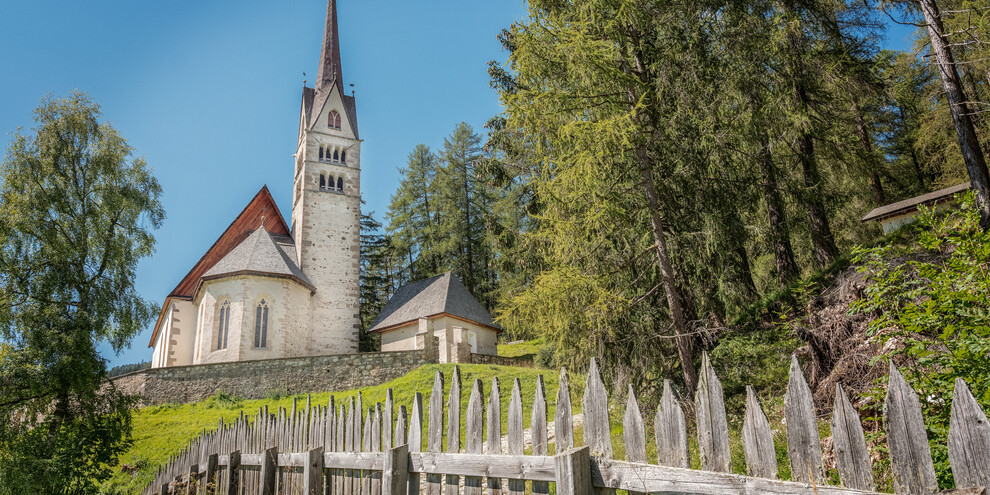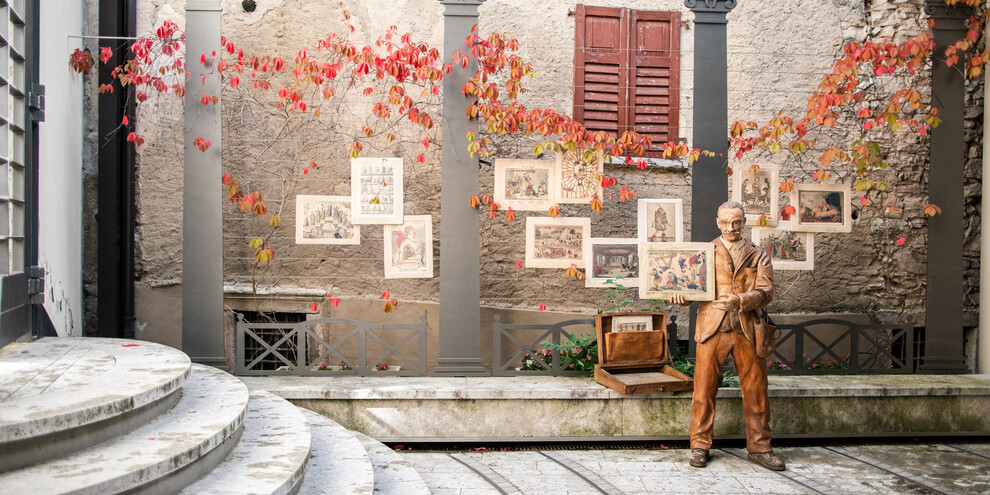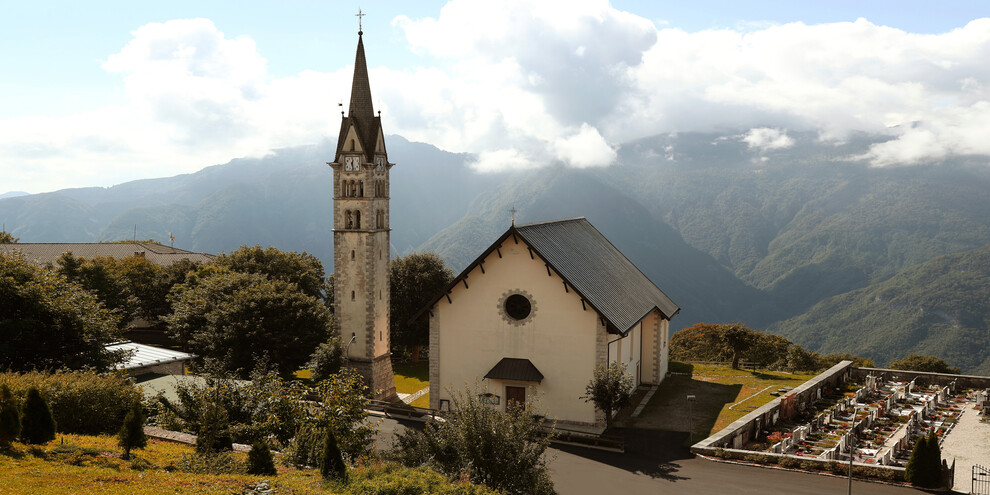Visit our villages to experience the taste of tradition
A guide to 6 beautiful small towns and their traditional dishes
SPRING/SUMMER - The hamlets of Trentino are like wildflowers: beautiful little secrets, tucked away in valleys surrounded by woods or in the heart of the mountains. You can recognise them by the smell of wood and the fresh breeze that blows in from the fields, softly soothing your skin in summer. Stone archways, wooden balconies, ancient barns and the unmistakeable aroma of traditional cooking, inviting you on a delicious journey back through time, where you can spend your days in rhythm with nature and savour life’s small pleasures.
Start by exploring the 6 Trentino towns on the list of “Italy’s most beautiful villages”: the ideal places to leave the crowds behind and spend some time with the ones you love.
Canale di Tenno, a stone’s throw from the lake
Ancient inns, stone archways and sturdy walls: just a few kilometres from Lake Garda, this stunning medieval hamlet is perched on a hill overlooking the turquoise waters of Lake Tenno. Explore its narrow streets, admire the view, and stop for a glass of wine in the village square. Before leaving, don’t forget to try a classic of Trentino cuisine: carne salada coi fasoi, thinly sliced raw beef served with beans.
Bondone, a window onto Lake Idro
This small town, which joined the list of “Italy’s most beautiful villages” in 2018, is located in southern Trentino, on the border with Lombardy. Once a town of charcoal burners, today it is a settlement on Lake Idro made up of stone houses decorated with stunning frescoes. Here, you can enjoy a hearty polenta carbonera, another unmissable recipe from Trentino’s rustic cuisine.
A weekend of well-being in San Lorenzo in Banale
At the foot of the Brenta Dolomites and just a short distance from Lake Molveno, San Lorenzo in Banale is the ideal place for a couple’s weekend built around nature, sport and tradition. Outside the village are pathways leading to the Adamello-Brenta nature park, while within the town itself you can wander through its courtyards, squares and ancient barns. And don’t miss out on a taste of ciuìga, a traditional style of sausage with a strong flavour.
Discover the rural architecture of Rango
If you want to learn about the rural architecture of Trentino’s ancient hamlets, Rango is just the place! This little town not far from Comano Terme will make you feel like you’ve stepped back in time, when days were punctuated by the tolling of the bells and evenings were spent gathered around the fire. Oh, and remember to sample the famous Bleggio walnut cake, a regional delicacy.
A weekend in romantic Mezzano
This romantic hamlet at the foot of the Pale di San Martino is striking for at least three reasons: first of all, its artistic wooden installations known as “cataste & canzei”; next, for its music and theatre events; and finally for its breath-taking views of the Dolomites. Before leaving, you must try the fresh cheese Tosèla di Primiero paired with a dish of polenta and luganega trentina sausage and washed down with a craft beer from Bionoc: you won’t be disappointed!
Sèn Jan di Fassa and Ladin culture
Here, between the Catinaccio and Marmolada mountain groups, the ancient mountain language of Ladin is still spoken. The municipality of Sèn Jan di Fassa (which encompasses the towns of Vigo di Fassa, Pozza di Fassa and Pera di Fassa) is the best place to watch the setting sun cast a pink glow over the Dolomites. What could be more romantic! For dinner, we recommend a typical dish from Ladin cuisine, such as cajoncie da fighes, ravioli stuffed with figs, and a slice of Cher de fascia cheese.
Pieve Tesino, nature and culture of Europe
Birthplace of Alcide De Gasperi, forerunner of the European Union, one of Italy’s most beautiful villages, loved by mountaineers and mountain explorers, stands at the foot of the Cima d’Asta massif. The village is a natural open-air museum, and is a unique treasure for those who love history. In addition to the De Gasperi Museum, the Per Via Museum tells the story of those who left and those who stayed. Enjoy “Le verde”, a typical dish prepared with fermented cabbage, which is quite different from the more famous sauerkraut.
The linguistic island of Luserna
The smallest municipality of the great Trentino highlands is a treasure of history and traditions that continue to fascinate anthropologists and intellectuals from all over the world. Named as one of Italy’s most beautiful villages in 2021, it continues to preserve Cimbrian, the ancient German language of the Middle Ages. To get to know it, walk along the “Cimbrian Path of the Imaginary” and enjoy the “patàtana pult”, a sort of polenta made of potato and a handful of toasted flour and cooked in a copper cauldron on the wood stove.



